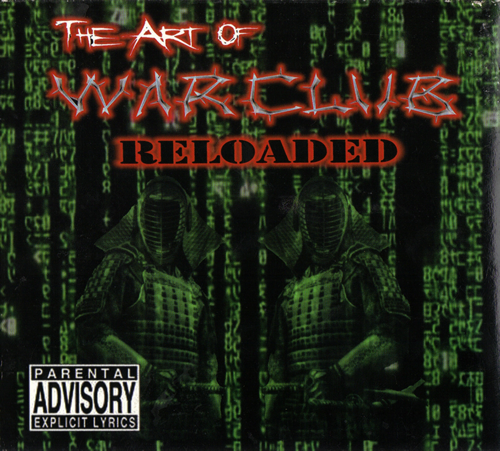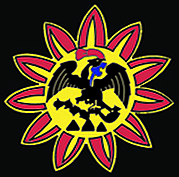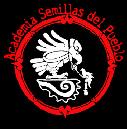The Cuban Revolution
1952, March 10
With elections approaching and victory for the opposition likely, Gen. Fulgencio Batista overthrew Prío Socorras and assumed power. During the next seven years, Batista allowed U.S. influence to pervade the entire Cuban economy, including public utilities, petroleum, sugar, and tourism. Famous for its African-Cuban music and freewheeling nightlife, Havana became the tourism capital of the Americas.
1956, Nov. 24
Castro and 81 followers, including his brother Raúl and ERNESTO “CHE” GUEVARA, sailed for Cuba from Mexico to renew the struggle. After a difficult landing, Castro and a handful of survivors barely made it to the Sierra Maestra in Oriente.
1957, May 20
Castro appealed to the U.S. to stop sending arms to Batista. He led many raids in Oriente Province, gaining sympathy from peasants. Guerrilla actions and strikes had paralyzed the region's economy by the end of 1957. Repression only generated more support for his 26th of July Movement.
1959, Jan. 1 > Jan. 5
Manuel Urrutia, named provisional president by Castro (Jan. 3), named José Miro Cardona premier, and the following day announced rule by decree for 18 months. The U.S. recognized the new regime on Jan. 7.
1959, Feb
FIDEL CASTRO became premier of Cuba following the victory of the revolutionary forces, and Cuba became a radical force in the Western Hemisphere.
1959, Jan. 1 > June 4
An agrarian reform law was promulgated, providing for appropriation (with remuneration) of large landholdings. U.S. sugar companies, expecting to lose 1,666,000 acres, responded by demanding full and prompt payment in cash.
1959, Jan. 1 > Oct
Maj. Huber Matos, revolutionary leader and virulent anti-Communist, was arrested for treason. His trial, which resulted in a 20-year prison sentence on little evidence, indicated the direction of the revolution. This occurred as Castro was moving toward an alliance with the PSP, as well as assuming an increasingly nationalist stance vis-à-vis the U.S. Right-wingers and moderates were pushed out of the government and the unions.
1959, Jan. 1 > Nov. 3
The U.S. State Department declared it would not tolerate the establishment, by anti-Castro Cuban refugees, of an exiled, provisional government in the U.S.
1960, Feb. 13
Premier Castro signed an agreement in Havana for the Soviet purchase of 5 million tons of sugar and for $100 million of Soviet credit to Cuba.
1960, Feb. 13 > March 17
The Eisenhower administration approved plans for a future invasion of Cuba.
1960, Feb. 13 > June 23
After American-owned oil companies (on the advice of the U.S. State Department) refused to process Soviet crude oil, Castro seized the refineries.
1960, Feb. 13 > July 6
In retaliation for the oil refinery incident, Pres. Eisenhower cut Cuba's sugar quota by 95 percent. Eisenhower declared economic war on Cuba, stating that the U.S. would never allow a regime “dominated by international Communism” in the Western Hemisphere. Following this, the CUBAN GOVERNMENT BEGAN EXPROPRIATING ALL U.S.-OWNED PROPERTY in Cuba, without compensation.
1960, Feb. 13 > July 9
Soviet premier Nikita Khrushchev, in a Moscow address, threatened Soviet use of rockets if the U.S. intervened militarily in Cuba.
1960, Feb. 13 > Oct. 14
The Cuban government nationalized all banks and all large enterprises.
1960, Feb. 13 > Oct. 19
The U.S. imposed an embargo on all exports to Cuba except for medical supplies and most foodstuffs.
1961
Declared as the Year of Education, 1961 saw almost 250,000 Cuban students and teachers working in rural areas to teach literacy.
1961 > Jan. 3
The U.S. severed diplomatic relations with Cuba after Castro demanded that the U.S. cut its embassy personnel.
1961 > March 22
In New York, the Democratic Front and the Revolutionary Movement of the People, two major Cuban opposition groups, announced agreement on setting up a revolutionary council with ex-premier José Miro Cardona as president. He urged all Cubans to revolt against Castro.
1961 > April
Rumors became rife of anti-Castro forces led by the Cuban revolutionary council. At the UN on April 15, Cuban foreign minister Raúl Roa accused the U.S. and the Latin American nations of preparing an invasion.
1961 > April 17-20
A CUBAN REBEL FORCE of about 1,600 men, funded and trained by the CIA, INVADED SOUTHERN CUBA and established a beachhead near the Bay of Pigs, but it was driven off with heavy losses. The force had been directed by CIA officials, but at the last moment the U.S. government withdrew air support, effectively guaranteeing a massive defeat. In the aftermath of the invasion, popular support for Castro in Cuba reached new heights, and Castro began to refer to the revolution as a socialist one. Members of the former PSP also assumed more prominent roles in his government.
1961 > Dec. 2
PREMIER CASTRO DECLARED HIMSELF A MARXIST-LENINIST
and announced the formation of a vanguard party to bring communism to
Cuba.
1962-70
Castro initiated a major restructuring of the economy. A brief experiment with diversification and industrialization failed because of poor planning. By 1963 Castro decided to reemphasize the sugar economy, realizing that the capital for industrialization could only be generated by sugar. Rural production actually fell by 7 percent between 1962 and 1969, but as early as Oct. 1963 the government began efforts to revitalize agriculture. The Agrarian Law of 1963 expropriated thousands of medium-size farms, making centralized state farms dominant. During the subsequent period of Communist construction, Castro concentrated economic authority in the government. Working closely with Che Guevara, in 1965 Castro introduced moral incentives and promoted the idea of the new Socialist man in order to increase productivity. Cuba became dependent on Soviet subsidies as production targets were missed and absenteeism became endemic. In 1969, Castro launched a revolutionary offensive aimed at producing a ten-million-ton sugar harvest. This campaign severely disrupted the national economy, draining manpower and resources from other sectors before falling short with a harvest of 8.5 million tons. Following this failure, Castro's economic policies became more eclectic and his dependency on Soviet aid more pronounced. Despite these problems, the Cuban government was able to achieve noteworthy improvements in education, social services, and health care.
1962, Sept. 11
The USSR accused the U.S. of preparing aggression against Cuba and warned that this would mean war. Khrushchev declared that Soviet arms were being sent to Cuba “exclusively for defensive purposes.”
1962, Sept. 11 > Oct. 10
The U.S. government agreed to help pay the $60 million ransom set by Castro for the release of 1,113 Cuban prisoners.
1962, Sept. 11 > Oct. 22-Nov. 20
THE CUBAN MISSILE CRISIS came to a head in a U.S.-USSR confrontation over the installation in Cuba of Soviet offensive missile and bomber bases [>]. Pres. Kennedy announced a U.S. air and naval “quarantine” to prevent arms shipments and proceeded to negotiate for the removal of Soviet offensive weapons from Cuba. Kennedy and Premier Khrushchev reached agreement on Oct. 28 that (1) the Soviets would halt construction of missile bases in Cuba and remove weapons under UN supervision, and (2) the U.S. would end the quarantine and give assurances that it would not invade Cuba. The U.S. blockade was ended on Nov. 20.
1962, Sept. 11 > Dec. 23-24
The remaining 1,113 Cuban rebels were returned to the U.S. in return for food and medicines valued at $53 million.
1964, Jan. 22
Concluding a visit by Castro to Moscow, Cuba and the Soviet Union signed a long-term trade agreement calling for increased Soviet purchase of Cuban sugar.
1964, Jan. 22 > July 21-26
Cuba was condemned by the Organization of American States for supplying pro-Communist Venezuelan guerrillas with arms. The OAS invoked sanctions and called on members to sever diplomatic and trade relations. Only Mexico and Jamaica refused.
1965, Oct
Castro announced that Cubans were free to leave. On Nov. 6 an agreement was reached with the U.S. government to airlift 3,000-4,000 Cuban refugees monthly. In the next five years several hundred thousand, many from the educated classes, left the island, joining those who had left during the first great wave of out-migration from 1959 to 1961.
1965, Oct > Oct. 3
Che Guevara departed for an unspecified destination. During his time in the revolutionary government, Guevara had been second in command in Cuba, serving as president of the National Bank, minister of industry, and architect of the policy of exporting the Cuban revolution. Guevara went on to lead a failed guerrilla war in Bolivia and was killed on Oct. 8, 1967, by Bolivian troops.
1966, Feb
A new trade agreement was signed with the USSR. Cuba was increasingly dependent on Soviet Russia for both direct and indirect aid. Serious friction developed between the two countries, however, leading to savage attacks on the Cuban ideology in Pravda and a cooling of relations in 1967.
1970-75
Despite economic problems and poor productivity, the Castro government made advances in housing, employment, health care, and education. In part as a result of Soviet aid, rural income jumped, and hunger was largely eradicated.
1974
Under pressure from the Cuban Federation of Women, the government introduced the national Family Code. The code gave equal rights to women, as well as legal rights to children, but was never aggressively enforced. The year 1974 also saw the inauguration of Assemblies of Popular Power, meant to counter the central state's style of governing from the top down. Real power remained in the higher echelons of the Cuban Communist Party (PCC) and Castro's inner circle, but these assemblies did express some popular concerns.
1975, July
The OAS lifted a trade embargo that it had imposed on Cuba in 1964.
1976, Feb
The new constitution was approved in a national referendum.
1978
At the Soviet Union's urging, 11,000 Cuban troops were sent to Ethiopia to help defend the country against a Somalian invasion.
1979, July
The FSLN came to power in Nicaragua after years of Cuban assistance. The Cuban government immediately pledged aid to the regime. By June 1982 there were over 2,000 Cuban military advisers in Nicaragua.
1980, April-Sept
After the Peruvian embassy refused to turn over six refugees, Castro declared that all those who wished to could leave Cuba. Ten thousand Cubans swamped the embassy grounds, seeking asylum. Over the following months, some 125,000 fled Cuba in the Mariel boatlift to Florida. Some of those who left were criminals released from Cuban prisons.
1981, Jan
Cuba provided military assistance to the major guerrilla offensive in El Salvador.
1989-92
With the collapse of the Soviet Union and dramatic disruptions in Cuba's trading relationships, the Cuban economy contracted by 45 percent. The resulting shortages and rationing brought the standard of living back down to pre-1959 levels and threatened to wipe out most revolutionary gains.
1990
After a period of tense Soviet-Cuban relations because of Castro's heavy criticism of perestroika, the two countries signed a trade agreement to increase trade by 7.5 percent. Tourism also became an important source of foreign exchange earnings, bringing 360,000 visitors who spent over $200 million in Cuba during 1990, and reviving prostitution, which had been nearly wiped out after 1959.
1992, Jan > Sept. 18
The U.S. tightened its trade embargo by forbidding foreign subsidiaries of U.S. companies from trading with Cuba.
1994, April 22-24 > July 26-Aug. 4
A new exodus of Cubans to the U.S. began as the Cuban government allowed people to leave at will; widely seen as a move by Pres. Fidel Castro to pressure a U.S. government fearful of a repeat of the 1980 Mariel boatlift.
1994, April 22-24 > Aug. 19
U.S. president Clinton announced that Cuban refugees intercepted at sea by the U.S. Coast Guard or navy would be transferred to holding camps in the U.S.'s Guantánamo Bay naval base and other locations. Immediately following the announcement more than 7,000 Cubans were intercepted at sea.
1994, April 22-24 > Oct. 26
Cuba made a move toward a more mixed economy by implementing economic reforms that opened some new markets. As part of this initiative, the government announced (Dec. 20) a “convertible peso” with a fixed value of one U.S. dollar, placed in circulation for international transactions.
1996, Feb. 24
Two civilian U.S. planes were shot down in Cuban airspace by Cuban jets; the U.S. called for international sanctions against Cuba and heightened its own embargo.
1997, Oct. 8-10
Some 1,500 delegates attended the fifth Communist Party Congress in Havana. No major changes in economic or political policy emerged. Pres. Castro reaffirmed supremacy of the Communist state, anointed his brother Raúl Castro as his successor, and called for Cubans to stand by revolutionary ideals in the face of adversity and outside pressure for change.
1999, Jan. 5
The United States modified its embargo on Cuba
to encourage communication with Cuba and ease poverty without supporting
the Cuban government.
War Club - Riotstage


Hear more War Cub music @
Mexica Uprising MySpace
Add Mexica Uprising to your
friends list to get updates, news,
enter contests, and get free revolutionary contraband.
Featured Link:
"If Brown (vs. Board of Education) was just about letting Black people into a White school, well we don’t care about that anymore. We don’t necessarily want to go to White schools. What we want to do is teach ourselves, teach our children the way we have of teaching. We don’t want to drink from a White water fountain...We don’t need a White water fountain. So the whole issue of segregation and the whole issue of the Civil Rights Movement is all within the box of White culture and White supremacy. We should not still be fighting for what they have. We are not interested in what they have because we have so much more and because the world is so much larger. And ultimately the White way, the American way, the neo liberal, capitalist way of life will eventually lead to our own destruction. And so it isn’t about an argument of joining neo liberalism, it’s about us being able, as human beings, to surpass the barrier."
- Marcos Aguilar (Principal, Academia Semillas del Pueblo)
![]()
Grow
a Mexica Garden
12/31/06
The
Aztecs: Their History,
Manners, and Customs by:
Lucien Biart
12/29/06
6 New Music Videos
Including
Dead Prez, Quinto Sol,
and Warclub
12/29/06
Kalpulli
"Mixcoatl" mp3 album
download Now Available
for Purchase
9/12/06
Che/Marcos/Zapata
T-shirt
Now Available for Purchase
7/31/06
M-1
"Til We Get There"
Music Video
7/31/06
Native
Guns "Champion"
Live Video
7/31/06
Sub-Comandante
Marcos
T-shirt Now Available for Purchase
7/26/06
11 New Music Videos Including
Dead Prez, Native Guns,
El Vuh, and Olmeca
7/10/06
Howard Zinn's
A People's
History of the United States
7/02/06
The
Tamil Tigers
7/02/06
The Sandinista
Revolution
6/26/06
The Cuban
Revolution
6/26/06
Che Guevara/Emiliano
Zapata
T-shirts Now in Stock
6/25/06
Free Online Books
4/01/06
"Decolonize"
and "Sub-verses"
from Aztlan Underground
Now Available for Purchase
4/01/06
Zapatista
"Ya Basta" T-shirt
Now Available for Purchase
3/19/06
An
Analytical Dictionary
of Nahuatl by Frances
Kartutten Download
3/19/06
Tattoo
Designs
2/8/06


